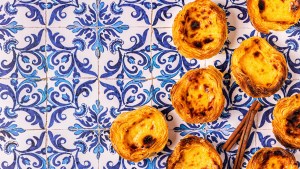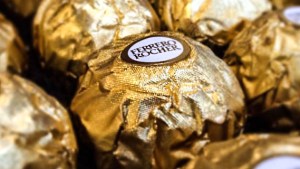The Monasterio de Piedra in Aragón (Spain) holds a unique place in history: It is the site where Europeans first tasted what we now call hot chocolate. Located near the village of Nuévalos in the Calatayud region of Zaragoza, this heritage site offers a blend of nature and history that attracts visitors from all over Spain – and beyond.
Founded by Cistercian monks in the late 12th century, the Monasterio de Piedra preserves eight centuries of history since its consecration in 1218. Although temporarily abandoned in 1835, the monastery was revived as a tourist destination five years later, allowing the public to explore its historical and natural wonders.

The Monasterio de Piedra Natural Park, where the monastery is located, offers quite an array of natural attractions. These include the Cola de Caballo (Spanish for “Horse’s tail”), a 50-meter waterfall that can be viewed from a natural cave. The serene Lago del Espejo (Mirror Lake) provides a radical contrast to the area’s dynamic waterfalls. Amidst this unique scenery, the Cistercian monks chose to build their monastery, finding it an ideal place for contemplative life – but also for gastronomic innovation.
Inside the monastery, several rooms stand out, including the chapter hall, the abbey church, the wine cellar, and the calefactory (a warming house). In particular, its old kitchen holds a special place in culinary history. It was here in 1534 that the first hot chocolate in Europe was prepared – a feat achieved by the monks then living in this cloister.
An Aztec recipe
The story of hot chocolate’s introduction to Europe begins with Friar Jerónimo de Aguilar, who traveled with Hernán Cortés to Mexico, then known as Nueva España – the “New Spain.” Aguilar returned with cacao seeds and an Aztec recipe for transforming them into a liquid form. The then abbot of the Monasterio de Piedra, Don Antonio de Álvaro, was the first to make the drink, combining cocoa with sugar, cinnamon, and vanilla. This innovative creation was a first not only for Spain, but for the entire world.

The fact that the monks included cocoa in their diet, which was not considered to violate the rules of fasting since it was not mentioned anywhere in the Bible, underscores their ingenuity. The energy provided by the cocoa drink even proved beneficial during periods of fasting, demonstrating the monks’ practical adaptation of this Aztec commodity. It was (and still is) the perfect monastic drink.
Today, visitors can visit the monastery’s Historia del Chocolate en Piedra exhibition, which highlights the cultural, historical, and even spiritual significance of chocolate. The exhibit details how Hernán Cortés even described chocolate in a letter as “manna from the gods,” and explores the origins of this Aztec delicacy – xocolatl.




